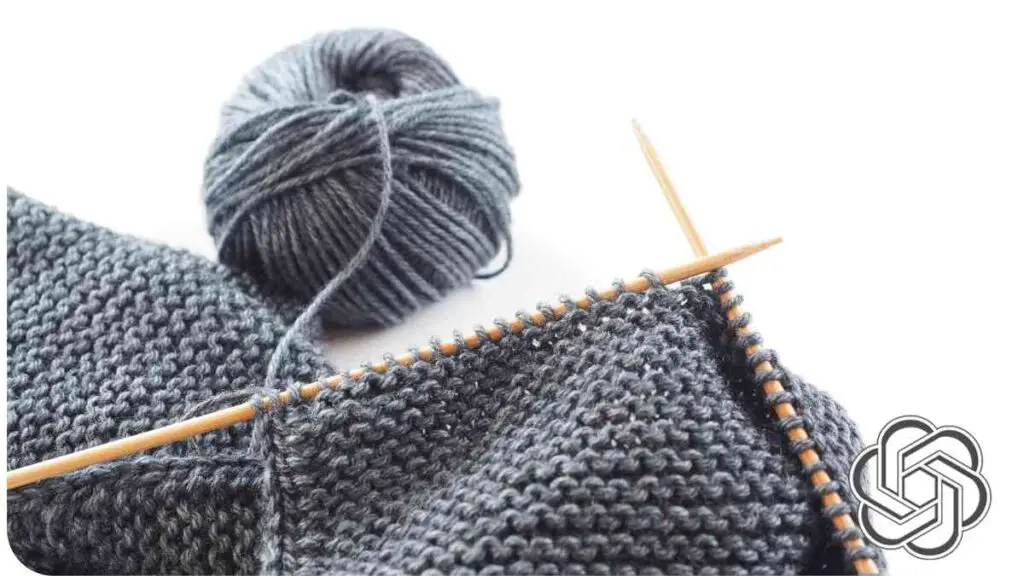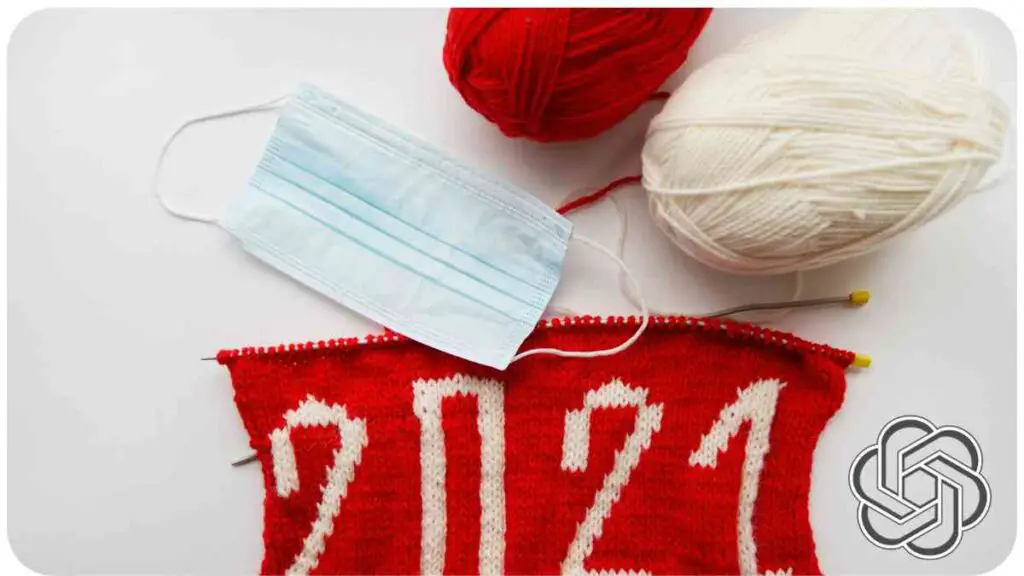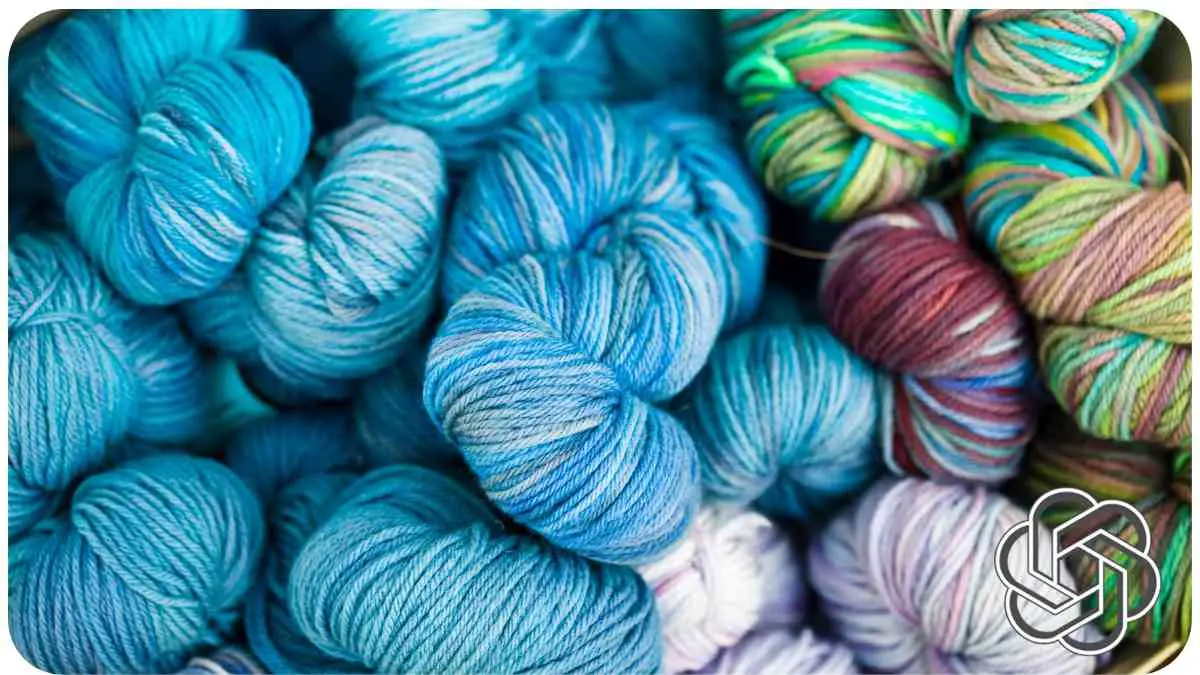Have you ever wondered how many skeins of yarn you need to complete a knitting or crochet project? Understanding the quantity of yarn required for your project is essential to ensure you have enough to complete it without running out.
In this article, I will guide you through the process of determining the perfect amount of yarn needed for your projects. By considering various factors such as project type, yarn weight, gauge, and project size, you’ll be able to confidently estimate the number of skeins required. Let’s dive in!
| Takeaways |
|---|
| Consider project type, yarn weight, stitch pattern, gauge, and project size when estimating yarn quantity. |
| Adjust for yarn substitutions by comparing the yardage per skein of the recommended yarn and the substitute yarn. |
| Calculate the estimated yardage needed for your project and divide it by the yardage per skein to determine the number of skeins required. |
| Purchase extra skeins to avoid running out of yarn, especially for larger projects. |
| Store extra yarn in a cool, dry place and protect it from moths and other potential damage. |
| Buy enough yarn from the same dye lot to ensure color consistency in your project. |
| Refer to the provided resources for more detailed information on estimating yarn quantities. |
2. Determining Yarn Quantity: Factors to Consider
When it comes to determining the quantity of yarn needed for a project, there are several factors you need to consider. Each of these factors plays a crucial role in estimating the amount of yarn required for your specific project. Let’s explore these factors in detail.
“When embarking on a crochet project, selecting the right yarn is crucial for success. Understanding yarn weight, fiber content, and color options can make a significant difference in the outcome of your project. To learn more about choosing the perfect yarn, visit this comprehensive guide.”
2.1 Project Type
Different types of projects require varying amounts of yarn. For instance, a small hat will generally require less yarn compared to a larger project like a sweater or a blanket. Identifying the type of project you plan to make is the first step in determining the quantity of yarn needed.
2.2 Yarn Weight
Yarn comes in different weights, ranging from lace to super bulky. The weight of yarn affects the yardage needed for a project. Thicker yarns typically have shorter yardage per weight, so you’ll need more skeins to complete a project compared to using thinner yarns. Be sure to check the yarn label for information on its weight category.
2.3 Stitch Pattern
The stitch pattern you choose for your project can impact yarn usage as well. Some stitch patterns, like cables or complex lace, tend to use up more yarn than simple stockinette or garter stitch. Depending on the complexity of the pattern, you may need to account for additional yarn when using intricate designs.
“Knitting needles come in various sizes, and knowing the differences between them is essential for a successful knitting project. Whether you’re a beginner or experienced knitter, this comprehensive guide will help you navigate the world of knitting needle sizes and their importance.”
2.4 Gauge
Gauge refers to the number of stitches and rows you achieve within a given measurement. By matching the recommended gauge provided in your pattern, you ensure that your project will have the correct dimensions. Since gauge affects the amount of yarn used, it’s crucial to measure it accurately.
2.5 Project Size
The size of your project is an obvious factor to consider when estimating yarn quantity. Whether you’re making a baby sweater or a king-sized blanket, the dimensions of your project significantly impact the amount of yarn needed. Larger projects generally require more skeins compared to smaller ones of the same type.
2.6 Yarn Brands Comparison Table
To help you make an informed decision while choosing yarn for your project, here is a comparison table of some popular yarn brands:
3. Calculating Yarn Yardage

Once you have considered the various factors mentioned earlier, it’s time to calculate the yarn yardage needed. By using certain measurements and adjusting for any yarn substitutions, you can estimate the required yardage accurately.
“Creating a scarf requires knowing how many stitches to cast on, which is determined by your pattern. If you’re wondering how many knitting stitches you need for your scarf project, check out this decoding guide to make your knitting experience smoother.”
3.1 Standard Measurements
Standard measurements for different projects can serve as a helpful starting point in your yarn estimation process. Here are some typical measurements to take into account:
- Scarf: 6 feet long, 7 inches wide
- Sweater: 40 inches chest circumference, 26 inches in length
- Baby blanket: 30 inches square
These measurements provide a rough idea of the yardage you may need, but it’s crucial to consider the specific factors for your project to get a more accurate estimate.
3.2 Adjusting for Yarn Substitutions
If you’re substituting a yarn recommended in the pattern with a different one, you’ll need to make adjustments to the yardage calculation. Yarns of the same weight category can have different yardage per skein, so it’s important to check the label of the substitute yarn and compare it to the original yarn to understand any differences.
To make the necessary adjustments, calculate the difference in yardage per skein between the recommended yarn and the substitute yarn. Then, multiply this difference by the number of skeins recommended in the pattern. Add or subtract this adjusted yardage from the original calculation to get the estimated yardage needed for your project using the substitute yarn.
3.3 Table: Estimated Yardage for Common Projects
To provide you with a better understanding of estimated yardage for common projects, here’s a table showcasing approximate yardage requirements:
| Project Type | Yardage per Project |
| Scarf | 400 – 600 yards |
| Hat | 100 – 200 yards |
| Shawl | 800 – 1000 yards |
| Baby Sweater | 400 – 600 yards |
| Cardigan | 1200 – 1800 yards |
| Blanket (Throw) | 2000 – 3000 yards |
Please note that these numbers are just general estimates and may vary depending on the specific factors mentioned earlier.
“Yarn pilling can be a common issue in knitting and crochet projects. However, you can easily address this problem and keep your projects looking their best. Learn effective methods to prevent and fix yarn pilling by visiting this informative article.”
4. Estimating Skein Numbers

Now that you have the estimated yardage needed for your project, you can further calculate the number of skeins required. This depends on the yardage per skein of the yarn you’re planning to use.
4.1 Yarn Yardage per Skein
Every skein of yarn comes with a specified yardage. By dividing the estimated project yardage by the yardage per skein, you can determine the approximate number of skeins needed to complete your project. Remember to round up to the nearest whole number to ensure you have enough yarn.
4.2 Example Calculation: Scarf
Let’s say your estimated yardage for a scarf is 500 yards, and the yarn you’ve chosen has 200 yards per skein. Dividing 500 by 200 equals 2.5, so you need approximately 3 skeins to complete the scarf.
4.3 Example Calculation: Sweater
For a more significant project like a sweater, let’s assume your estimated yardage is 1600 yards, and the yarn has 300 yards per skein. Dividing 1600 by 300 gives you approximately 5.33, so you’ll need around 6 skeins to complete the sweater.
5. Tips for Buying Yarn
When purchasing yarn, it’s always a good idea to buy a little extra to avoid running out. Here are some tips to consider:
“Are you unsure whether crochet projects require more yarn than knitting? Get the facts and debunk the myth about yarn usage in crochet versus knitting by reading this fact-check article. Understand the nuances and make informed decisions for your projects.”
5.1 Storing Extra Yarn
If you end up with excess yarn after completing your project, store it properly to maintain its quality. Ensure it’s kept in a cool, dry place and protected from moths and other potential damage.
5.2 Dealing with Yarn Dye Lot Variations
Dye lot refers to a specific batch of yarn that was dyed together. Yarns from different dye lots can have slight variations in color, which may be noticeable in a project. To avoid color discrepancies, it’s recommended to purchase enough yarn from the same dye lot to complete your project. If you run out and need additional yarn, check the dye lot numbers on the labels to find a close match.
5.3 Buying Extra Skeins Table
To assist you in determining the quantity of extra skeins to buy based on project size, here’s a table for reference:
| Project Size | Extra Skeins to Buy |
| Small | 1 – 2 skeins |
| Medium | 2 – 3 skeins |
| Large | 3 – 4 skeins |
| Extra Large | 4 – 5 skeins |
Remember, it’s always better to have more yarn than you need rather than running out and struggling to find a matching dye lot or having an incomplete project.
6. Conclusion
Calculating the quantity of yarn required for a project is a critical step in ensuring a successful and stress-free crafting experience. By considering factors such as project type, yarn weight, stitch pattern, gauge, and project size, you can estimate the number of skeins needed accurately.
Additionally, understanding how to adjust for yarn substitutions and purchasing extra skeins can save you from potential difficulties. With these insights and tips, you’re well-equipped to embark on your next yarn-filled adventure. Happy crafting!
Further Reading
Here are some additional resources that provide more insights into estimating yarn quantities for your projects:
- How Much Yarn Do You Need? – Sarah Maker: This blog post offers detailed information on determining the amount of yarn required for crochet projects. It covers various factors to consider and provides helpful tips for accurate estimation.
- Q&A: How Much Yarn Do I Need? – Twisted Yarn Shop: This Q&A-style article addresses common questions about yarn quantities and provides guidance on estimating yarn requirements based on different project types.
- How Much Yarn Do I Need? – Shiny Happy World: In this article, you’ll find valuable advice on calculating yarn quantities for knitting and crochet projects. It covers various factors and provides practical tips for successful estimation.
These resources can offer additional perspectives and help expand your knowledge on estimating yarn quantities accurately.
FAQs
Below are some frequently asked questions (FAQs) about estimating yarn quantities and their answers:
How do I determine the amount of yarn needed for a project?
To determine the amount of yarn needed for a project, consider factors such as project type, yarn weight, stitch pattern, gauge, and project size. By calculating the estimated yardage required and dividing it by the yardage per skein, you can estimate the number of skeins needed.
Can I substitute yarn in a pattern?
Yes, you can substitute yarn in a pattern. However, when substituting yarn, it’s important to consider the yardage per skein and make adjustments accordingly. Calculate the difference in yardage between the recommended yarn and the substitute yarn to ensure you have enough for your project.
What if I run out of yarn during my project?
If you run out of yarn during your project, it can be challenging to find the exact same dye lot to match your existing yarn. To avoid this situation, it’s recommended to buy extra skeins at the beginning, especially for larger projects. Keeping track of your progress and estimating yarn usage can help prevent running out.
How should I store extra yarn?
To store extra yarn, make sure it’s kept in a cool and dry place, away from direct sunlight. Use airtight containers or sealed bags to protect it from moths and other potential damage. Labeling the yarn with relevant information such as dye lot numbers can also be helpful for future reference.
What is dye lot and why is it important?
Dye lot refers to a specific batch of yarn that was dyed together. Yarns from different dye lots may have slight color variations, which can be noticeable in a project. Buying yarn from the same dye lot ensures color consistency. When purchasing additional yarn, check the dye lot numbers on the labels to find a close match for a seamless appearance in your project.

My name is Hellen James, and I’m a crochet and knitting expert. I’ve been crocheting since I was just a kid, but I started taking it seriously when I realized that it was a great way to de-stress and relax. Now that I have kids of my own, I love teaching them how to do it too!

